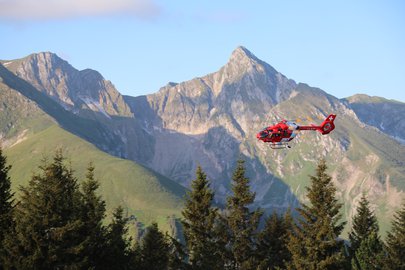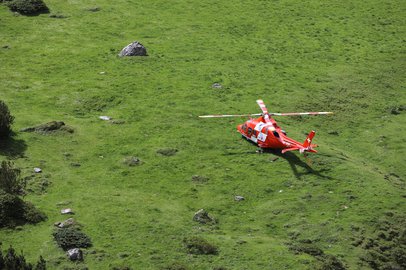Thorough preparation is essential for any hike. In particular, you should make sure that you know your exact route and the conditions along the way. Hiking trails, mountain trails and alpine routes all demand different levels of ability.
Plan your route realistically
Pay attention not only to the distance, but also to the elevation on your route. Elevation gain makes all the difference on a mountain hike and can quickly lead hikers to underestimate distances. Allow yourself plenty of time, not forgetting breaks. Are you hiking with children? Then set aside more time and choose a route that suits your children’s ability. Take account of the season and the weather, too: you can find out about current conditions on websites and webcams, at cable car stations and mountain huts, or by talking to local residents.
Say no if necessary
Too much of a challenge heightens the risk of accidents and is less enjoyable. Be realistic about your own abilities, and plan accordingly. If you are hiking with others, be sure to choose a route that suits everybody. The weakest member of the group always sets the pace and the level of difficulty for your tour.
Equipment for every eventuality
Safety has a lot to do with equipment. The right shoes, for example: stumbling and slipping are the most common causes of mountain walking accidents. Make sure that you wear sturdy hiking boots with soles that have a good grip and give you plenty of support. Take sun and rain protection and warm clothes with you – the weather can change suddenly in the mountains. To help you know where you are at any time, an upto-date hiking map is a useful item to have with you, even in the digital age. Maps on a scale of 1:25,000 or 1:50,000 are a good choice. Tourist maps only give a rough idea of the terrain and the course of a trail. Remember to pack a first-aid kit, a rescue blanket and your mobile phone for emergencies.
Turn back in time
Even if you have planned your hike carefully, are well equipped and have already made good progress: stay attentive! Tiredness can seriously affect how sure-footed you are. Drink, eat and rest regularly to keep strong and focused. Also remember your time schedule and the weather. If the weather deteriorates, turn back in good time or seek shelter. Are you lost? Stay together as a group, return to your last known point and, if necessary, get help. The general rule is: do not take risks and do not overdo it. Always turn back in good time.
Ask Rega for help
Despite every precaution, things sometimes just happen - and Rega's assistance is needed. In Alpine terrain, even a sprained ankle can quickly turn into an emergency. We always recommend calling out Rega using the Rega emergency app. Then the precise coordinates of an accident location are transmitted directly to the Operations Centre and the Rega helicopter pilot knows where to find the site.
If you do not have a smartphone or have not installed the Rega app, you can also alert Rega by calling the emergency number 1414. If no mobile service is available where you are, change your position and additionally try calling the European emergency number 112. Sometimes, just a few metres can make the difference between no service and service.
The following information helps the Rega Operations Centre to swiftly dispatch the appropriate help:
Where are you exactly?
Coordinates, place name, locality, prominent landmarks. Tip: the Rega app automatically transmits your coordinates to the Operations Centre.
Who can be contacted at the accident scene, and how?
Full name, telephone number
What happened exactly?
How did the accident happen? What did you see?
How many people are involved?
Number of casualties, nature of their injuries
What is the situation at the accident site?
Possible to land a helicopter? Obstacles such as cables, power lines, antennae?
What are the weather conditions at the accident site?
Visibility? Rain? Wind?







